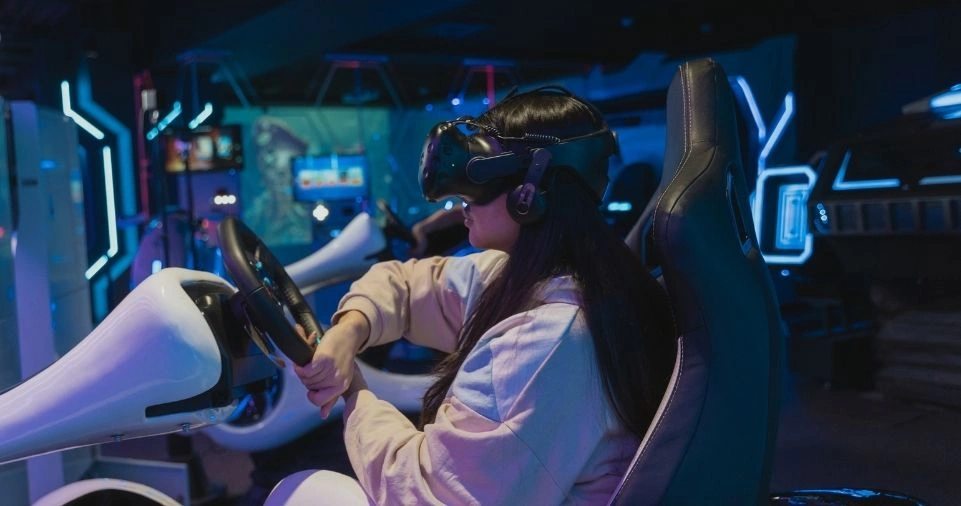Virtual Reality (VR) training is revolutionizing industries by providing immersive, realistic, and safe training environments.
In sectors where danger is inherent, such as construction, firefighting, military, and oil and gas, VR training is emerging as an indispensable tool.
By simulating high-risk scenarios, VR training equips workers with the skills they need to perform effectively and safely without exposing them to real-life hazards.
Beyond safety, VR training also contributes to cost efficiency, enhanced learning, and adaptability, making it a critical investment for future workforce development.
The Importance of VR Training in High-Risk Industries
Safety in Training
One of the primary advantages of VR training is its ability to provide a risk-free environment. Trainees can experience and navigate through dangerous situations without any physical danger. This is especially critical in industries like:
- Firefighting: Simulating fire outbreaks to train for effective response and evacuation procedures. Firefighters can experience different types of fires and their behavior, such as electrical fires, chemical fires, or wildfires.
- Construction: Practicing heavy machinery operation, working at heights, and navigating hazardous sites without risking accidents. Trainees can also learn how to react during emergencies like scaffolding collapses or material spills.
- Military: Engaging in combat scenarios, hostage rescue missions, and emergency evacuations without real-life threats. Military personnel can also practice teamwork and coordination under simulated high-pressure conditions.
Cost-Effectiveness
While the initial investment in VR equipment may seem high, the long-term savings are significant.
Traditional training often involves physical setups, equipment wear and tear, and repeated use of consumables.
VR eliminates these costs, offering a scalable solution that can be reused indefinitely. Additionally, it minimizes the need for on-site trainers and reduces downtime caused by accidents during training.
Enhanced Learning Outcomes
VR’s immersive nature ensures that trainees are fully engaged. Studies have shown that immersive learning leads to higher retention rates compared to traditional training methods.
By replicating real-world scenarios, VR helps trainees develop muscle memory and decision-making skills that translate directly to their job performance.
For example, a crane operator trained using VR can confidently handle real-world machinery, having already mastered the controls in a simulated environment.
Customization and Scalability
VR training programs can be tailored to specific industries and job roles. For example:
- In the oil and gas industry, VR can simulate offshore drilling operations, emergency shutdowns, and maintenance protocols.
- In healthcare, VR can replicate complex surgical procedures, patient interactions, and emergency response scenarios.
- In logistics, VR can train workers on warehouse operations, forklift driving, and inventory management.
This flexibility makes VR a versatile training tool across sectors, adaptable to meet the needs of individual organizations.
Real-Time Feedback and Assessment
VR platforms can monitor trainee performance in real time, providing instant feedback. Metrics such as reaction time, accuracy, and decision-making can be tracked and analyzed to identify areas for improvement.
This data-driven approach ensures continuous improvement and skill development. For instance, firefighters can receive feedback on their response times during evacuation drills, enabling them to refine their strategies.
ALSO READ: 6 Leadership Books for Aspiring Leaders
Applications of VR Training in Dangerous Environments

Firefighting
VR simulations enable firefighters to train for various scenarios, such as:
- Industrial fires in factories or warehouses
- Residential fire outbreaks in multi-story buildings
- Hazardous material handling, including chemical spills and gas leaks
These simulations allow trainees to practice evacuation procedures, assess risks, and understand fire behavior in a controlled environment. They can also train in scenarios involving multiple variables, such as weather conditions and building layouts, enhancing their problem-solving skills.
Construction
In construction, VR training helps workers:
- Learn to operate cranes, excavators, and other heavy machinery
- Navigate complex construction sites with potential hazards like falling debris or unstable surfaces
- Identify safety violations and practice compliance with regulatory standards
This reduces workplace accidents and ensures compliance with safety standards. VR can also simulate emergency scenarios, such as equipment malfunctions, to test worker readiness.
Oil and Gas
VR is invaluable in the oil and gas sector, where risks include explosions, leaks, and equipment failure. Training simulations can cover:
- Emergency response to spills and explosions
- Equipment maintenance protocols, including diagnostics and repairs
- Offshore platform evacuation drills during storms or fires
Trainees can also practice communication and teamwork in high-stress situations, preparing them for real-life crises.
Military
Military training benefits significantly from VR by simulating:
- Combat scenarios in various terrains, such as urban areas, jungles, and deserts
- Hostage rescue missions with dynamic and unpredictable elements
- Parachuting, skydiving, and navigation exercises
These realistic simulations prepare soldiers for the challenges of real-world operations while minimizing physical risks. VR also enables collaborative training, where units can practice coordination and tactics in a shared virtual environment.
Healthcare
In the medical field, VR is used for:
- Surgical training, allowing doctors to practice intricate procedures without risking patient safety
- Emergency response drills, such as responding to mass casualty incidents or cardiac arrests
- Patient interaction scenarios, helping healthcare workers improve communication and empathy skills
This ensures healthcare professionals are prepared for high-stress situations and can deliver optimal care.
Benefits of VR Training
| Benefit | Traditional Training | VR Training |
|---|---|---|
| Safety | Risk of real-world accidents | Completely risk-free |
| Cost | High recurring costs | High initial cost, low maintenance |
| Engagement | Limited engagement | High engagement through immersion |
| Flexibility | Limited to physical setups | Highly customizable and scalable |
| Feedback | Delayed and manual | Instant and data-driven |
| Retention | Moderate | High due to immersive experience |
| Adaptability | Fixed to specific scenarios | Adjustable for various conditions |
The Future of VR Training
The future of VR training is promising, with advancements in technology driving its adoption. Emerging trends include:
Integration with Artificial Intelligence (AI)
AI can enhance VR by providing adaptive learning experiences tailored to individual trainees. AI can analyze performance data to dynamically adjust the difficulty level of simulations.
Haptic Feedback
The addition of touch sensations can make simulations more realistic, allowing trainees to “feel” textures, resistance, and impacts. This is particularly useful in fields like surgery and equipment handling.
Portable VR Devices
The development of lighter and more affordable VR gear will increase accessibility. Innovations such as standalone VR headsets eliminate the need for bulky hardware, making training more convenient.
Cloud-Based Training Platforms
Cloud technology enables organizations to deliver VR training remotely, allowing workers in different locations to access standardized training programs.
ALSO READ: Executive Coaching and Leadership: Why Every Successful Leader Needs Executive Coaching?
Conclusion
Virtual Reality training is transforming the way high-risk industries approach employee development.
By offering a safe, cost-effective, and immersive learning environment, VR is not just a technological advancement but a necessity for industries where safety and skill are paramount.
As VR technology continues to evolve, its potential to enhance training outcomes in dangerous environments will only grow, making it an essential investment for the future.
Organizations that adopt VR training today will not only enhance workforce preparedness but also set a new standard for innovation and safety in their industries.
